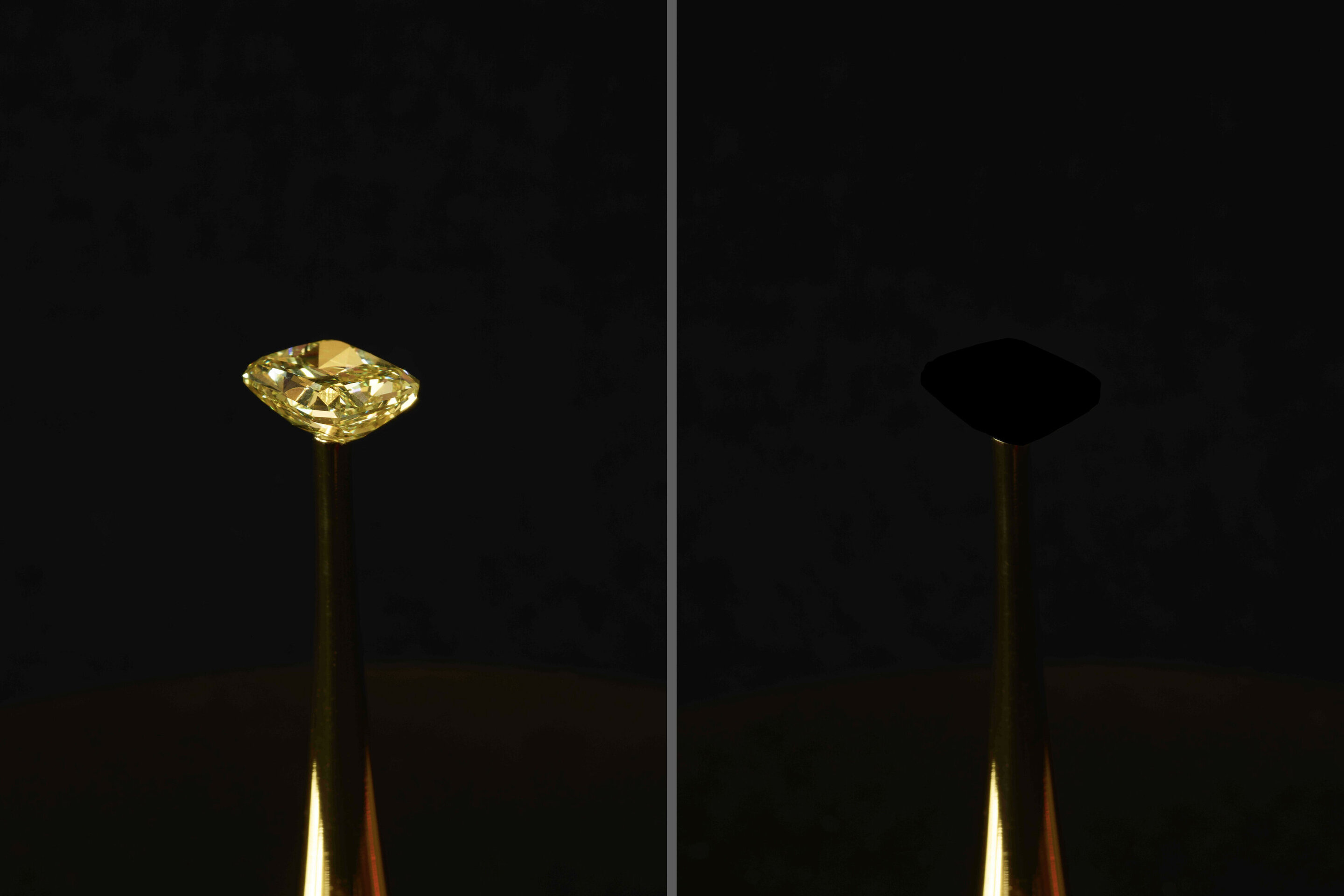This Is the Blackest Black Ever Created

Credit to Author: Becky Ferreira| Date: Fri, 13 Sep 2019 19:29:12 +0000
There’s midnight black, coal black, and jet black. But if you’re looking for the blackest shade of all, you’re going to have to splurge for carbon nanotube black.
A new study in the journal ACS Applied Materials and Interfaces has unveiled the darkest material ever created by humans. Built from tiny carbon cylinders arranged on an aluminum foil surface, the material absorbs 99.995 percent of light, from any angle, and the researchers say it’s 10 times blacker than any other substance ever reported. Sorry, Vantablack.
The new ultra-goth foil is currently on display at the New York Stock Exchange as part of an art exhibition called “The Redemption of Vanity.” The foil coats a $2 million diamond and blots out the gemstone’s prismatic sparkles.
The material was created serendipitously by Brian Wardle, a professor of aeronautics and astronautics at MIT, and Kehang Cui, a materials scientist at Shanghai Jiao Tong University, while the pair were trying to solve an unrelated problem with carbon nanotubes.
Carbon nanotubes are carbon atoms arranged in a single layer and rolled into a cylindrical form. They are a major subject of interdisciplinary research due to their extraordinary properties, which include thermal and electrical conductivity, and impressive tensile strength.
Wardle and Cui were trying to grow carbon nanotubes on aluminum surfaces in order to enhance the foil’s conductivity. But during these experiments, a thin layer of oxide kept forming on the aluminum that gummed up its electrical currents, thereby stifling conductivity.
Cui figured out that exposing the aluminum to saltwater dissolved the oxide, which enabled the team to produce nanotubes with the strong electrical properties they originally predicted, according to the study.
What they hadn’t foreseen, however, was that this recipe would produce the blackest stuff ever created by humans.
The team quickly recognized the aesthetic qualities of the material, and partnered with MIT artist-in-residence Diemut Strebe to create the darkened diamond exhibit.
But the study may have applications for several scientific fields, as well. For instance, the foil might be useful as a shading component for telescopes hunting for exoplanets, according to the researchers. The presence of radiant stars and galaxies can often make it difficult for these observatories to pick out small planets and other dim celestial objects, but ultra-black shades could help block out the glare.
The foil may also spur scientists to investigate the core properties of blackness, as well as its upper limits.
“This is a proper unexpected scientific discovery,” Wardle said in an email. “I think a much blacker material can be engineered given things like morphology of the carbon nanotubes that we know how to control.”
Update: This article has been updated to include comments from study co-author Brian Wardle.
This article originally appeared on VICE US.